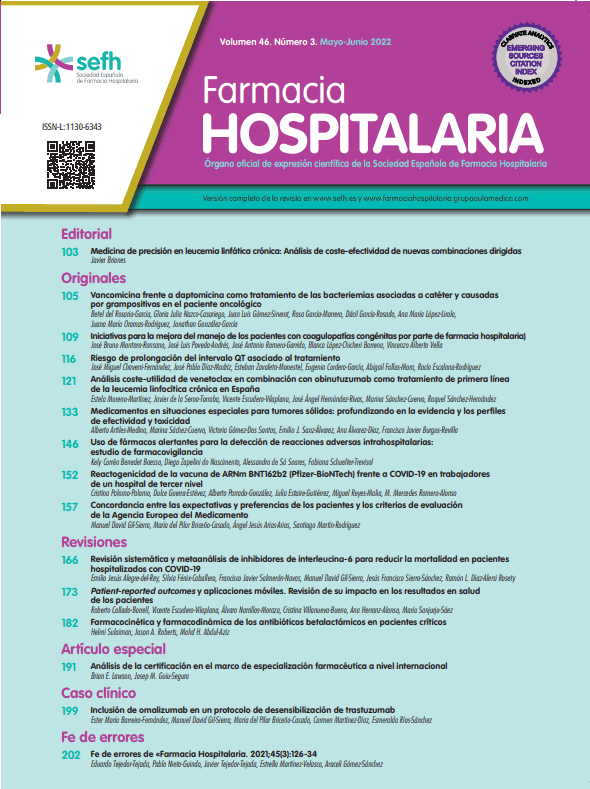A bezoar is a hard mass of undigested foreign matter found in the gastrointestinal system. The most common type is the phytobezoar, which is composed of vegetable fibres. There is no current consensus as to its treatment. Three cases of phytobezoars treated with cellulase are described.
Patients and methodCase 1: patient with large gastric phytobezoar. Initial treatment with nasogastric cola drink lavages was ineffective. Subsequent treatment with cellulase was successful. Case 2: patient with gastric phytobezoar who was treated with cellulase and metoclopramide. Definitive fragmentation was performed with the endoscopy technique. Case 3: patient with large intestinal phytobezoar. The patient was treated by endoscopic lysis with partial success. Subsequent treatment with cellulase led to complete disintegration. In all the cases, cellulase was administered in pure form by nasogastric tube, and none of the patients suffered adverse effects.
ConclusionsTreatment with cellulase is based on the enzymatic degradation of the bezoar. It has been shown to be effective as the treatment of choice in earlier studies with few patients. This agent seems to be a good alternative for patients with large phytobezoars.
Los bezoares son concreciones de material extraño no digerido localizadas en el tracto gastrointestinal. Los más comunes son los fitobezoares, formados por restos vegetales. Actualmente no hay consenso sobre su tratamiento. Se describen 3 casos de fitobezoares tratados con celulasa.
Pacientes y métodoEl caso 1 es un paciente con fitobezoar gástrico de grandes dimensiones. Se trató inicialmente con lavados de bebida de cola por sonda nasogástrica, pero resultó inefectivo. El tratamiento posterior con celulasa tuvo éxito. El caso 2 es un paciente con fitobezoar gástrico que se trató con celulasa y metoclopramida. La fragmentación definitiva se realizó mediante técnica endoscópica. Y el caso 3 es un paciente con un gran fitobezoar intestinal. Se trató mediante lisis endoscópica, que tuvo un éxito parcial. Posteriormente recibió celulasa y la disgregación fue completa. En todos los casos se administró celulasa como sustancia pura por sonda nasogástrica y ningún paciente presentó efectos adversos.
ConclusionesLa terapia con celulasa se basa en la degradación enzimática del bezoar. Ha demostrado eficacia como tratamiento de primera elección en estudios previos de pocos pacientes. Este agente parece una buena alternativa en pacientes con fitobezoares de gran tamaño.






